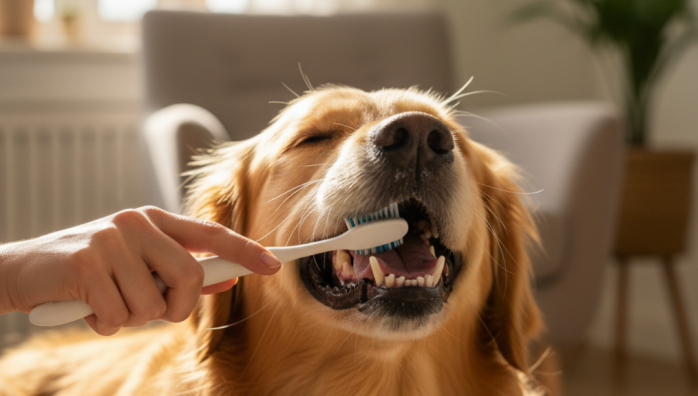Daily Toothbrushing Techniques for Dogs
by admin in Pet Care Basics 24 - Last Update November 24, 2025

I\'ll be honest, the first time my vet told me I should be brushing my dog\'s teeth daily, I internally rolled my eyes. It seemed like one more impossible task on a long list. My dog, a spirited rescue named Buster, wouldn\'t even let me look at his teeth without a fuss. But then I noticed his breath getting worse, and I saw a bit of plaque building up. That was my wake-up call. I realized that just like for us, dental health is a cornerstone of overall wellness for our dogs, and I was determined to figure it out.
Why I believe daily brushing is non-negotiable
Through my years working with animals and caring for my own, I\'ve seen firsthand how periodontal disease can cause pain, tooth loss, and even lead to more serious health issues affecting the heart and kidneys. Vets aren\'t just up-selling you on dental cleanings; they\'re trying to prevent suffering. Daily brushing is the single most effective thing I\'ve found to mechanically remove plaque before it hardens into tartar. It\'s preventative care that has saved me money and saved my dogs from discomfort in the long run.
Getting started: the right gear and mindset
My first mistake was grabbing a brush and trying to go for it. It was a disaster. Success, I learned, is all about gradual introduction and positive association. Here\'s the kit that I\'ve found works best:
- A pet-specific toothpaste: This is critical. Human toothpaste contains ingredients like xylitol, which is highly toxic to dogs. I opt for enzymatic toothpastes in flavors my dogs love, like poultry or beef. It makes the whole experience a treat.
- The right brush: I started with a simple finger brush, which is just a little rubber thimble with soft bristles. It helped my dog get used to the sensation. Now, I use a dual-ended toothbrush with a smaller head for tight spots and a larger one for the outer surfaces.
My step-by-step, stress-free method
This is the gentle process I\'ve honed over the years. Remember, the goal of the first few weeks isn\'t a perfect clean; it\'s building a positive routine. Go slow and keep sessions short and happy.
- Taste test: For a few days, I just let my dog lick the tasty toothpaste off my finger. No brushing, just positive association. This step is pure gold.
- Introduce the brush: Next, I\'d put the toothpaste on the brush and let him lick it off. Still no brushing. We\'re just making the tool a normal, non-threatening object.
- The first touch: After a few more days, I\'d gently lift his lip and touch just one tooth with the brush for a second, then praise him like he just won an award and give him a treat.
- Gradual progression: Over the next couple of weeks, I slowly increased the number of teeth I brushed, always focusing on the outside surfaces where tartar builds up most. I aim for a 45-degree angle to the gumline and use gentle, circular motions.
- Keep it short: To this day, my entire routine takes less than two minutes per dog. It\'s about consistency, not duration.
A word of caution I learned the hard way
Don\'t ever force it. If your dog is showing signs of stress—pulling away, growling, or excessive drooling—you\'re moving too fast. Go back a step. The goal is a willing participant, not a wrestling match. And while this routine has been a game-changer for my pets, it\'s not a substitute for professional veterinary care. I always recommend chatting with your vet to establish the best dental plan for your specific dog\'s needs.














